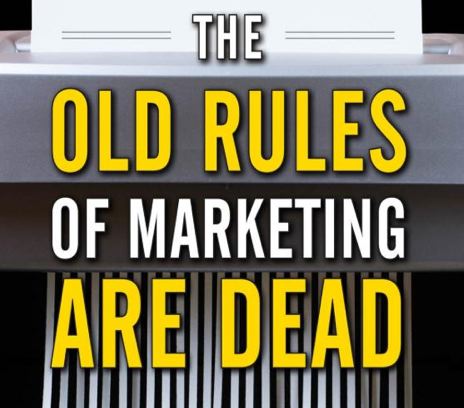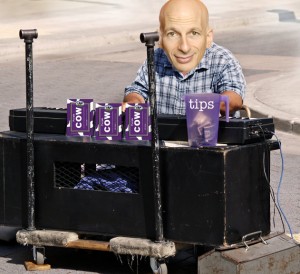
The coolest thing about marketers are the titles they give their books. Common, right? They’re marketers. What do you expect?
- “The Old Rules of Marketing Are Dead,” by Timothy R. Pearson, was released today and is already the business best-seller on Amazon. Fine- don’t buy it. Just keep doing the old stuff, and at least you’ll be right in a couple years when someone turns this one on its side.
- Apparently there are six new rules.
- So suckit Kotler
- because your marketing sucks.
- We have new rules now.
- Last month Ron Shevlin released the paperback of “Everything They’ve Told You About Marketing is Wrong,” so presumably it’s wrong too now.
- It’s been 11 years, of course, since the former Coke marketer, Sergio Zyman, proclaimed the end of marketing as we know it.
- Even Al Ries told us in 2002 that the rise of PR would follow the fall of advertising.
- I wonder what Philip Kotler will say on his death bed… like maybe just four words: “it was all bullshit.“
Yep, while marketing and advertising may be dead, the business of proclaiming it even more dead... is booming. Here are the six rules, and as you can see they defy the 6 marketing rules I learned in my MBA (which I’ve added in italics).
Oh- I think it goes without saying that I haven’t read the book, but I am considering adding it to the prized bookshelf of “The Enlightened Stupid Marketer.” At least he embraces book covers over books, right? Is there any irony to the fact that years after shooting that video I’d write a book and, to date, not read it?
- The Core is Everything (screw the customer, kill or be killed, don’t sleep)
Key chapters: Brand essence is important, customer knows best, your reputation is vital, play nicely, sleep soundly and work fearfully.
- You Have Nothing Without The Foundation (integrity is for the unemployment line… Ps in 2006 were product, price, piss the customer, and pimp it)
Key chapters: Integrity, single word or symbol, whole is larger than parts, mind your P’s….
- There Are Many Choices But Only One Customer (there’s a sucker born every minute; it’s easier to find a new customer than try to keep one).
Key chapters: Strategy is the heart and measurement is the blood, frameworks, perception really is your customer’s reality, communication, more than channel surfing.
- Do the Right Things for the Right Reasons (we watched Wall Street in Ethics class, talked about Walmart, and then all proclaimed: greed is goooood).
Key chapters: Relationships matter, partner, it’s about them not you…
- Infrastructure is More Than Pipes (in fact, a virtual tributary allows for add-drop multiplexing of subrate traffic… come to think of that, I might have learned that when my boutique web agency was acquired by Qwest Telcom).
Key chapters: Technology is just an enabler, right information, right people, right time… and don’t have wrong thought.
- Lead And Others Will Follow (be a fast follower… let your competitor take the arrows, then pull them from their body and use them against anyone that tries suing you for stealing their idea; be sure to pluck out their gold fillings… they won’t need them anymore because they’re dead).
Key chapters: Leadership is a verb not noun.
So, yeah. I have to relearn marketing again, but this time there’s not a test (which sucks because I would have cheated off of my friend Mike Skoler). I wonder if my damned MBA comes with a money-back guarantee (It probably does, but the small print says “not valid on days ending with the letter Y”).
For the record, this marketing-satire video (“Enlightened Stupid Marketer”) was indeed shot in a conference room of an employer who shall remain nameless. You’d never know that unless you worked there, so while I maintained the spirit of the no-camera law (confidentiality), I broke the “letter” of the law. More importantly, it was a satire not of my co-workers at the time but of a Coke executive I’d seen a month prior at a conference. Nobody believed me, and a number of people took offense to this (like the guy who sucked my will to live).
The nice thing about this video is that if you’re offended by it, I’ve struck a vulnerability nerve haven’t I? Are ya offended or are you secure in your marketing competencies? Do you see yourself lampooned, or do you giggle at the absurdity occasionally? If your teeth clench while watching, you MAY just have gelatophobia. There’s only one cure. Avoid people unless wearing ear muffs and blinders. Or just keep reading the latest marketing book that proclaims the last guy slightly dumber.

